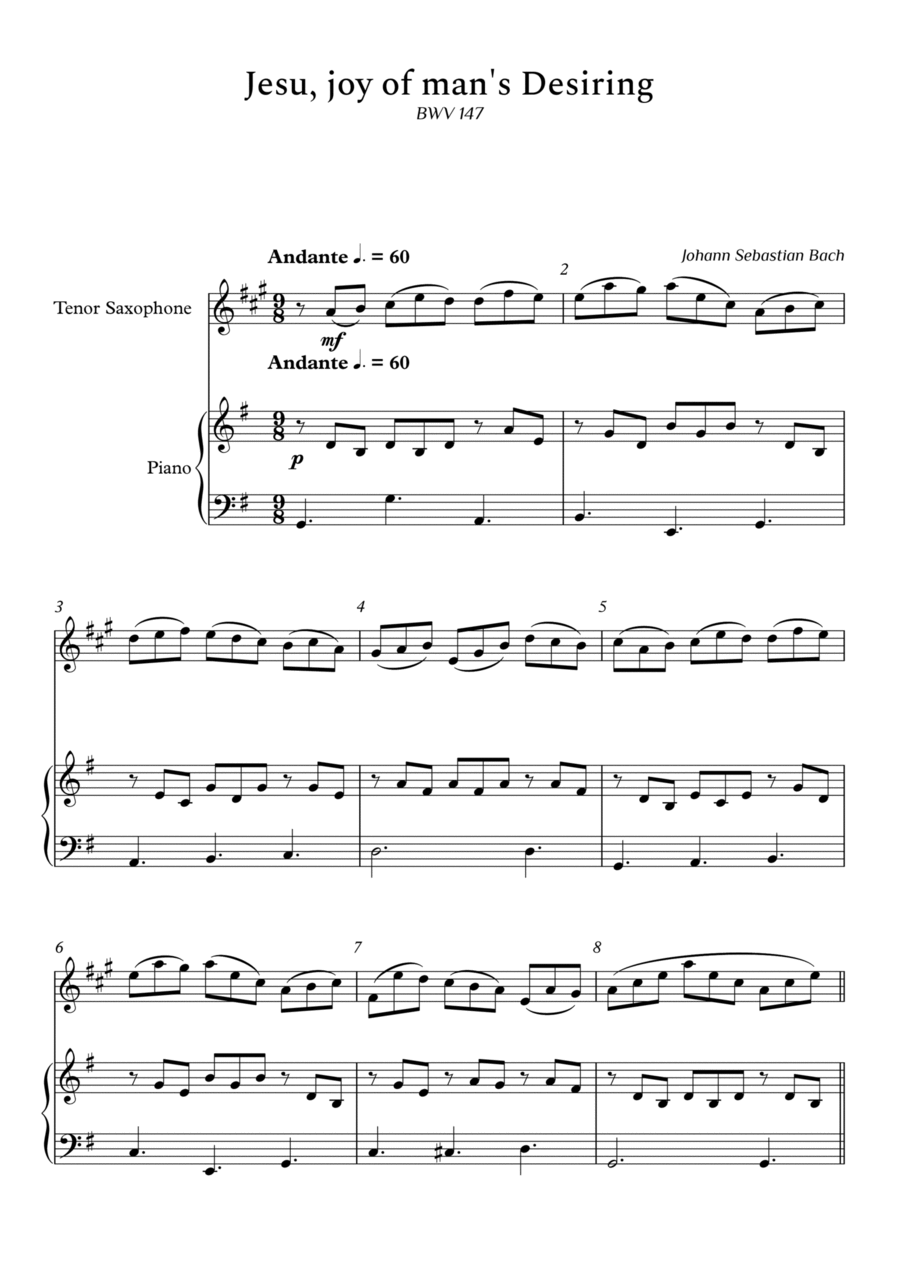Small Ensemble Piano,Tenor Saxophone,Voice - Level 2 - Digital Download SKU: A0.843222 Composed by Johann Sebastian Bach. Arranged by Cássio Silva Chaves. Baroque,Gospel,Instructional,Standards. Score and parts. 10 pages. Cassio Silva #6346703. Published by Cassio Silva (A0.843222). Jesu, Joy of Man's Desiring is a popular piece of choral music. It was composed by Johann Sebastian Bach. It is the 10th movement of the cantata Herz und Mund und Tat und Leben. It was written during Bach's first year in Leipzig, Germany. Bach did not compose the melody. That was written by Johann Schop. Bach only harmonized and orchestrated Schop's melody. A transcription of Jesu was done by English pianist Myra Hess (1890-1965), and was published in 1926 for solo piano.In 1934, Hess' version was adapted for piano duet. British organist Peter Hurford made a transcription of Jesu for organ. Today, Bach's piece is often performed at weddings and funerals. Bach wrote the piece for voices with trumpet, oboes, strings and continuo. Jesu, Joy of Man's Desiring is one of Bach's most enduring pieces of music.This song has an Intermediate Level of difficulties and can serve as a new step forward in the training of a musician.
